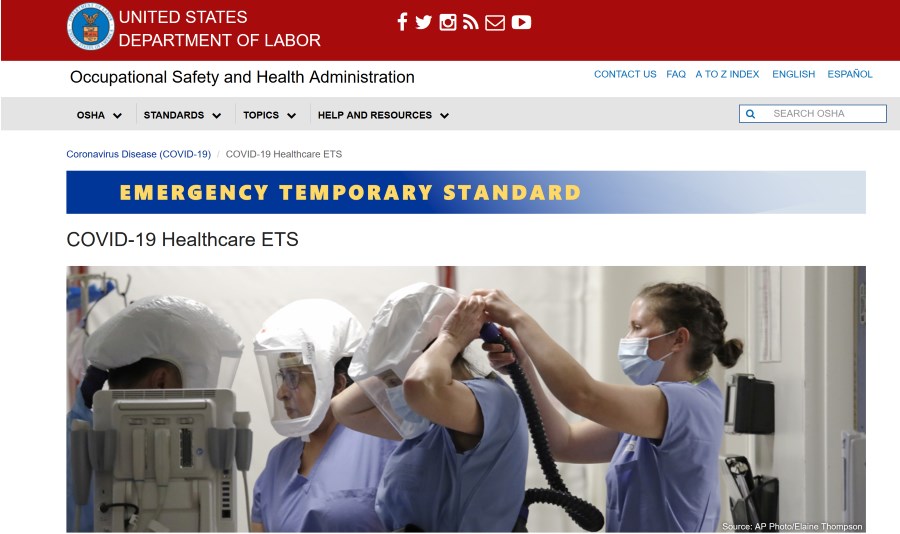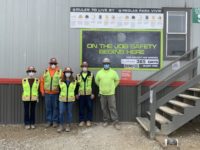The US Occupational Safety and Health Administration released on June 10 new requirements for health care workers—from emergency room employees to nursing home staff—through an Emergency Temporary Standard.
The Biden administration initially said the new OSHA rule would apply to other high-risk industries, possibly including construction, but during the approval process, decided it would be a health care industry-specific rule. Secretary of Labor Marty Walsh said other ETS rules may be forthcoming from OSHA but had no timeline for a rule involving construction.
In addition to the ETS for health care, OSHA also issued new guidance to some employers in other sectors such as meat processing, manufacturing, seafood and grocery and high-volume retail on how to protect workers but added no new guidance for contractors, construction managers or those in the construction supply chain.
"OSHA will update this guidance over time to reflect developments in science, best practices and standards," said Kimberly Darby, an OSHA spokeswoman. She said the guidance emphasizes that vaccination is "the optimal step" to protect workers.
"We've taken important steps already helping workers and businesses reopen safely," Walsh said on a teleconference announcing the new rule. "On day one, since I became labor secretary, I said that we need to take time to get this right for the workers."
Labor groups praised the rule but also said more needs to be done for workers in construction and industries other than health care where work has been deemed essential and working from home is not an option.
AFL-CIO President Richard Trumka said in a statement, that "15 months into this pandemic, health care workers will finally have enforceable OSHA protections that will require their employers to provide prevention measures to keep them safe from COVID-19 at work." But he added that "we are deeply concerned that the ETS will not cover workers in other industries, including those in meatpacking, grocery, transportation and corrections, who have suffered high rates of COVID-19 infections and death."
Construction industry groups generally praised the emergency standard as applying only to health care.
"This represents a significant change from early reports that the new standard would apply to a broad range of industries, including construction," said Steve Sandherr, CEO of the Associated General Contractors of America. "AGC of America led a broad coalition effort to question the need for the standard, considering the widespread adoption of coronavirus vaccines and the fact the construction industry has been operating, safely, since the start of the pandemic.The fact the final standard only applies to health care settings is a significant victory for our association and this industry."
The Construction Industry Safety Coalition—which includes AGC, the Associated Builders and Contractors and the National Association of Home Builders— issued a statement saying it is "pleased that the Biden administration and OSHA listened to the concerns and recommendations of the construction industry in formulating a COVID-19 Emergency Temporary Standard. OSHA made the right decision to issue an ETS to cover tasks associated with high-exposure risk levels and not construction operations, which are generally low risk."
The umbrella construction trade labor group, North America's Building Trades Unions, did not immediately respond to requests for comment on the new rule.
The Park Ridge, Ill.-based American Society of Safety Professionals, which counts 36,000 safety professionals in its membership, said, "The emergency temporary standard is a necessary action that will help employers across the health care sector take vital measures to better protect some of our most vulnerable workers and ultimately save lives."
It added that "we are immediately making members aware of this emergency temporary standard and are working to ensure that its application in health care settings is understood.”






Post a comment to this article
Report Abusive Comment